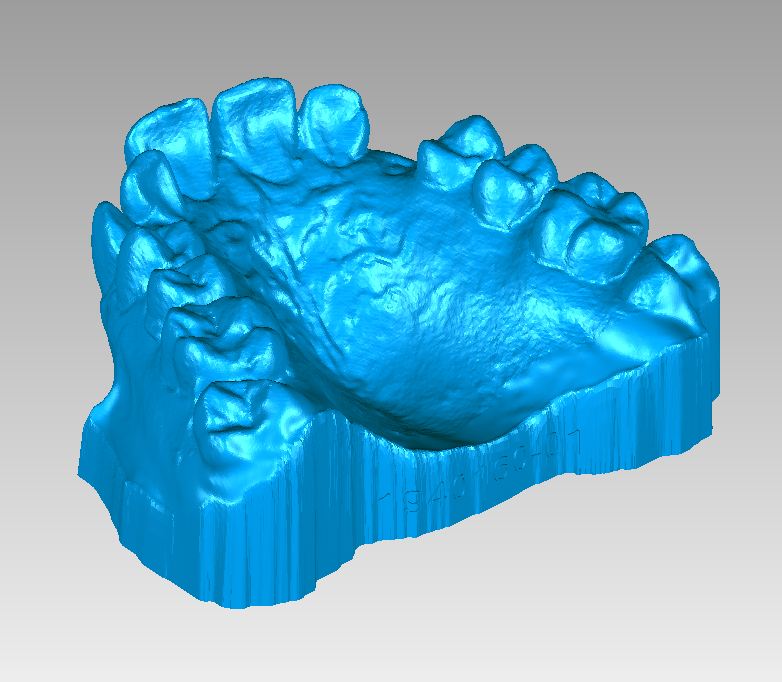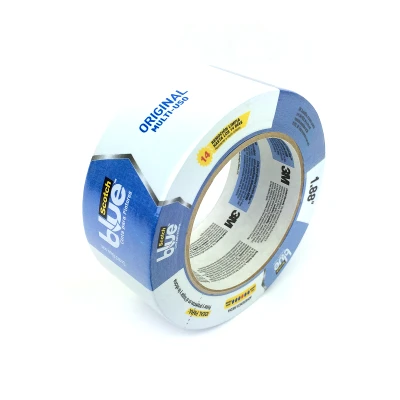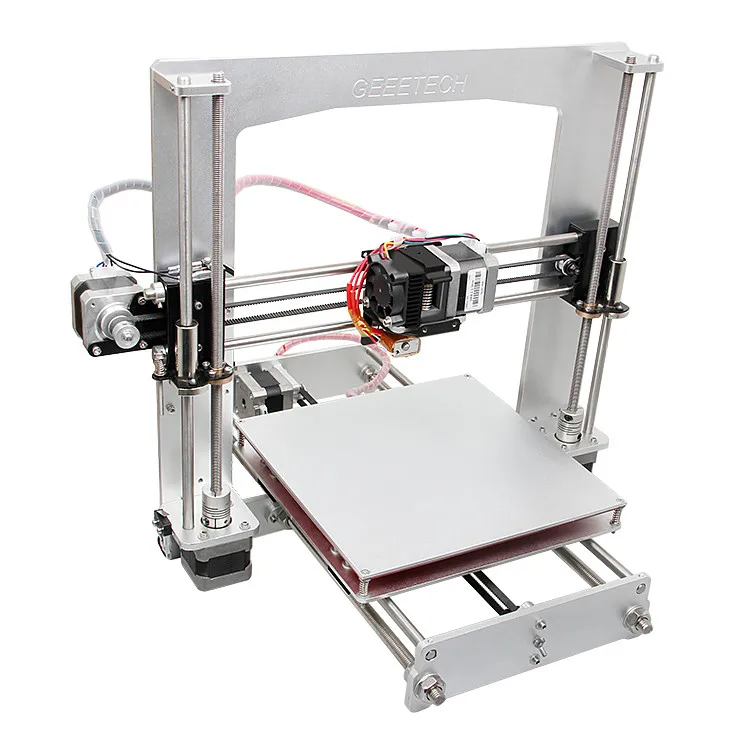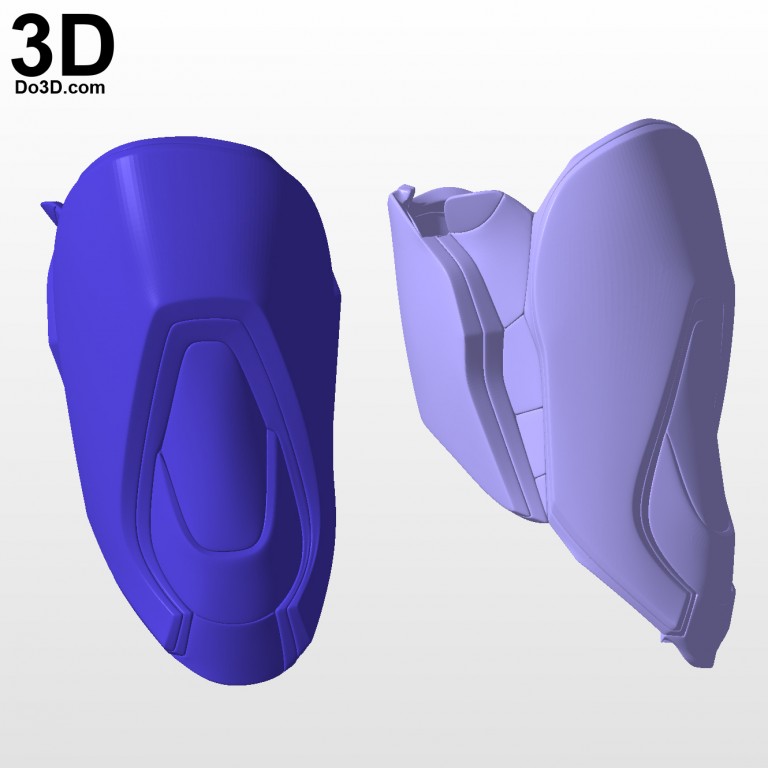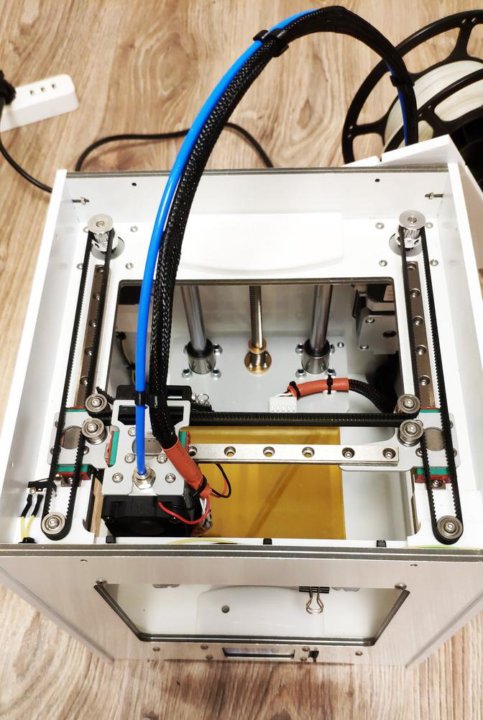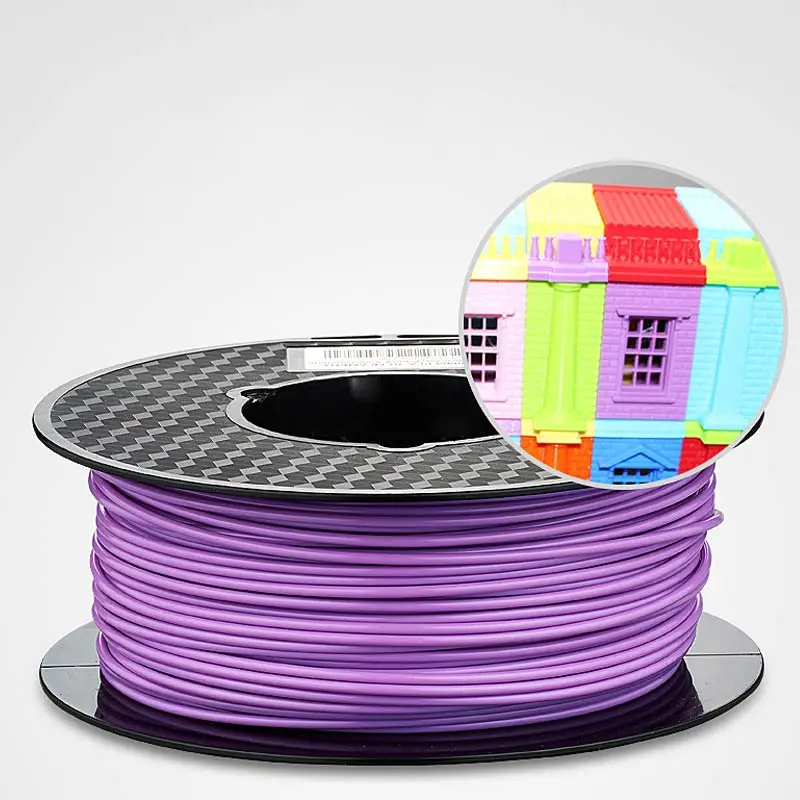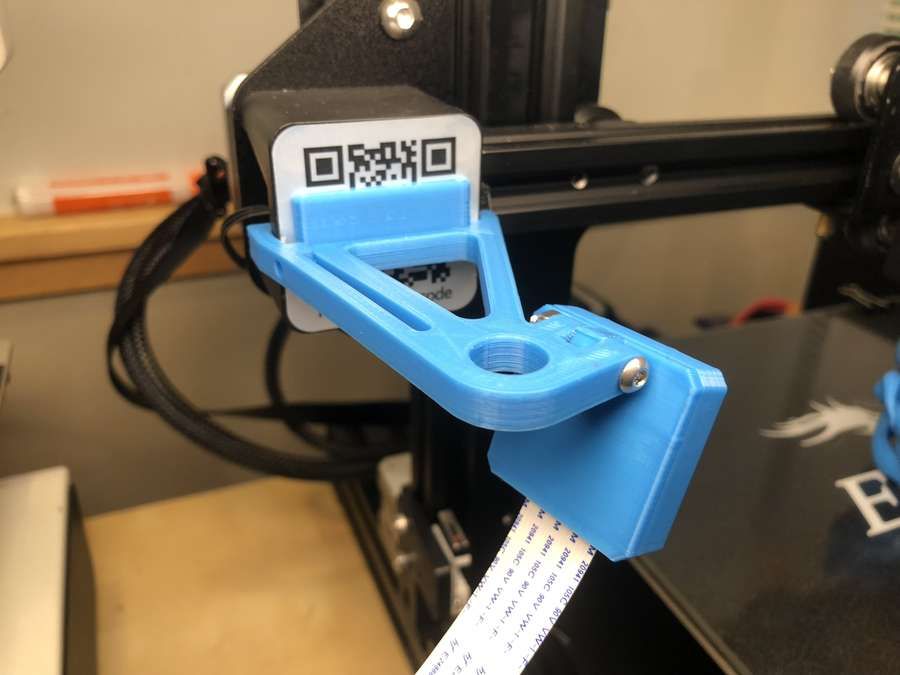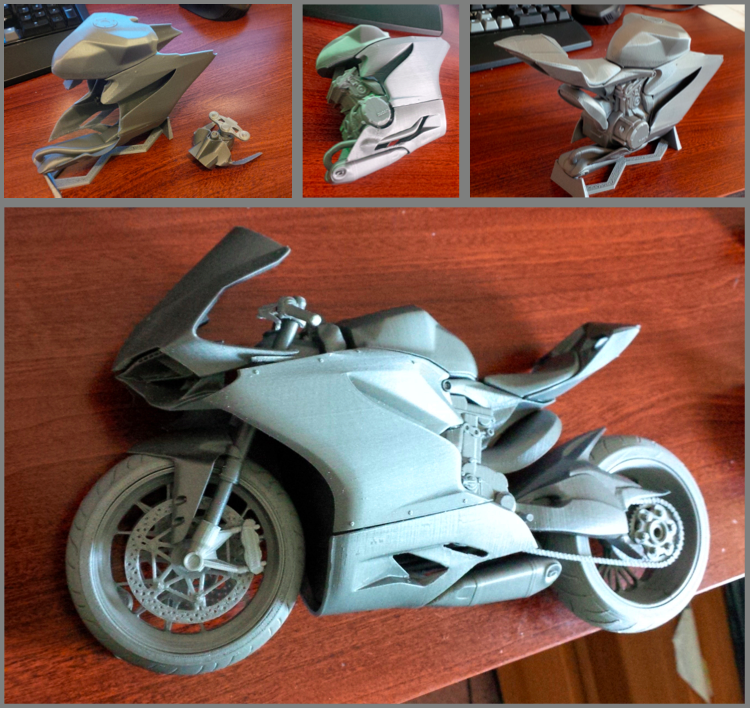Envisiontec 3d printing
3D Printers | Desktop, Professional and Industrial
ETEC offers a variety of 3D printing systems with the ability to mass produce polymer parts with the speed and quality needed for demanding end-use applications. ETEC printers deliver parts with exceptional accuracy, superior part properties, fine feature detail, and smooth surface finish at a scale and cost that is competitive with traditional manufacturing techniques like injection molding.
·
Printers
From desktop production of small parts to 24/7, lights-out manufacturing to large, production-grade printers, ETEC solutions address a wide range of production scales.
Materials
With more than 190 materials, from hard plastics to high-performance elastomers to high-temperature materials, ETEC’s material portfolio can address a huge range of applications.
High Accuracy + Feature Detail Smooth Surface Finish High Throughput Superior Part Properties Quality Materials Ease of Use
High Accuracy + Feature Detail
ETEC’s advanced DLP printing process delivers best-in-class part accuracy and feature detail down to the micron level.
Smooth Surface Finish
ETEC DLP parts deliver best-in-class surface finish with less than 1um Ra. This exceptional smoothness is critical to compete with plastic injection molding and is the result of more than 10 years of research & development devoted to perfecting the DLP process.
High Throughput
ETEC printers enable throughput [up to 100x legacy FFF 3D printing processes] to deliver parts at volumes and costs competitive with traditional manufacturing techniques like injection molding.
Superior Part Properties
ETEC combines advanced hardware features such as high-powered projectors and custom-designed optics with materials that leverage long-chain chemistry to deliver truly isotropic material properties critical for end-use applications.
High-performance Materials
With a wide array of materials, including both proprietary and third-party qualified resins, ETEC materials deliver mechanical properties required for for end-use parts across a range of industries and applications.
Easy To Use
ETEC solutions are designed for ease of use from the ground up, with intuitive software that simplifies the process of setting up and starting a print and the ability to switch between materials in just minutes, users can produce end-use parts tailored to their application with ease.
Trusted By Industry
· Systems
Our Systems
- Printer technology
- Build envelope
- Models
- XY Resolution
- Z Resolution
- Printer technology
- Build envelope
- Models
- XY Resolution
- Z Resolution
- Printer technology
- Build envelope
- Models
- XY Resolution
- Z Resolution
- Printer technology
- Build envelope
- Models
- XY Resolution
- Z Resolution
- Printer technology
- Build envelope
- Models
- XY Resolution
- Z Resolution
· Case Studies
3D Composites
Additive manufacturing service bureau using 3D printing to create parts for 747 jets, satellites, medical devices and more.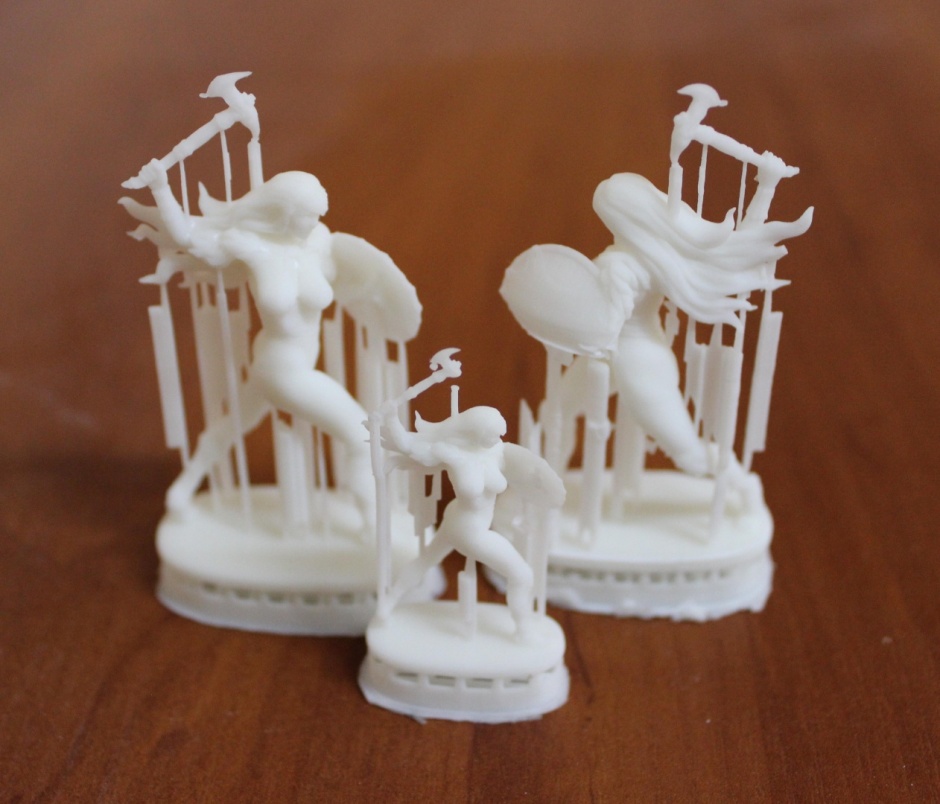
Shapeways
Industrial service bureau creating prototype parts for everything from consumer goods to medical devices.
Products - ETEC
Skip to content
Team DM
Platforms
Metal and composites 3D printing 3D printing solutions for health care Industrial-grade polymer 3D printing™
Sand and tooling 3D printing solutions 3D printers for sheet metalMaterials
Breakthrough photopolymer development Advancing 3D printed upcycled woodApps & More
The hydraulic additive manufacturing experts Multi-material powder recoating technology Driving digital transformation in dentistry· Systems
Our Systems
- Printer technology
- Build envelope
- Models
- XY Resolution
- Z Resolution
- Printer technology
- Build envelope
- Models
- XY Resolution
- Z Resolution
- Printer technology
- Build envelope
- Models
- XY Resolution
- Z Resolution
- Printer technology
- Build envelope
- Models
- XY Resolution
- Z Resolution
- Printer technology
- Build envelope
- Models
- XY Resolution
- Z Resolution
· Key Features
Why ETEC?
High Accuracy + Feature Detail
High-resolution printing with Industrial DLP Chips
DLP chips come in a variety of configurations, from industrial chips designed for 3D printing to less expensive chips intended for video projectors found in many offices.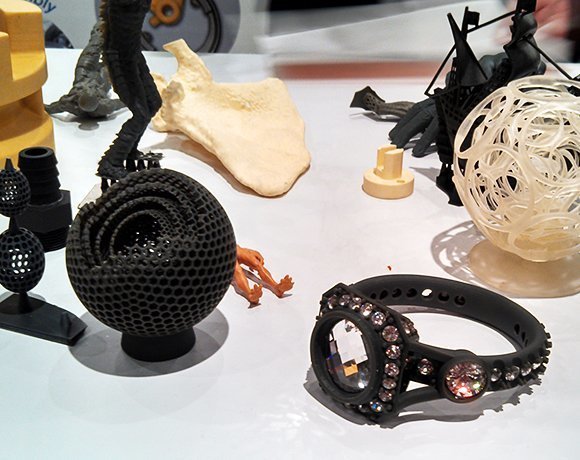 While some DLP print technologies choose to use these inexpensive chips to reduce costs, ETEC only uses true industrial DLP chips, which allow for higher contrast ratios, resulting in finer part details.
While some DLP print technologies choose to use these inexpensive chips to reduce costs, ETEC only uses true industrial DLP chips, which allow for higher contrast ratios, resulting in finer part details.
High-resolution printing with CDLM Domeless Printing
https://etec.desktopmetal.com/wp-content/uploads/2022/01/MS_DM_EnvisionTec_E1_CDLM_320.mp4
To print continuously (without peeling) requires flowing oxygen through a permeable film just above the print bed to create a “dead zone”. Within this ‘dead zone’ the polymerization process is inhibited ensuring the layer being printed adheres to the layer above and not the printing bed film. This ‘dead zone’ is what enables continuous printing, where the build plate can continually move in the Z axis, leading to faster, more reliable prints.
On competitor “dead zone” printers, by comparison, air pressure from the flowing oxygen causes the film to dome up. Printing parts on that domed surface greatly impacts resolution along the Z axis, as well as the ability to print flat parts on the build plate.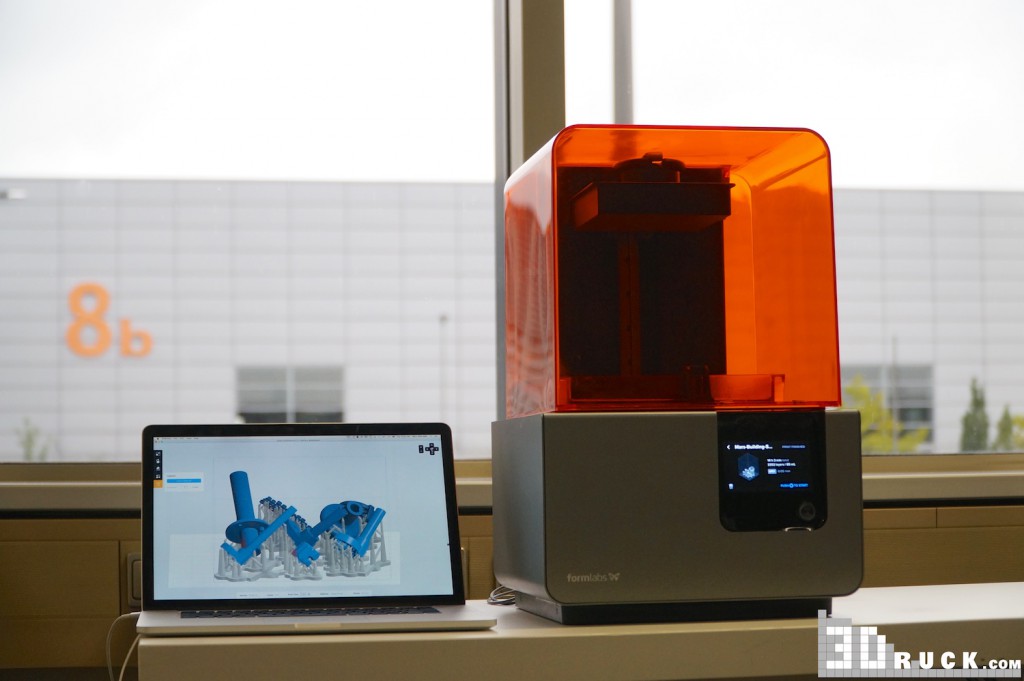
ETEC’s CLDM technology uses over 200,000 pillars to hold the film perfectly flat, resulting in significantly better Z-axis resolution and allowing for the printing of flat parts straight to the bed with no supports.
Smooth Surface Finish
Smooth surface finish with Pixel Shifting
Projectors deliver light in square-shaped pixels, which creates volumetric pixels, or voxels, as resin cures.
Along curved edges, however, square pixels create a jagged edge – what the industry often refers to as “stair stepping.”
As the size of printed objects and build volumes increase, stair stepping becomes more pronounced.
ETEC printers use patented pixel-shifting technology to move pixels at the edge of parts half a pixel in both the X and Y directions, cutting stair-stepping by half and delivering significantly improved surface finish.
Smooth surface finish with Pixel Tuning
Anti-aliasing technologies are ubiquitous today — used virtually everywhere digital images appear, from cell phones to TV screens and more.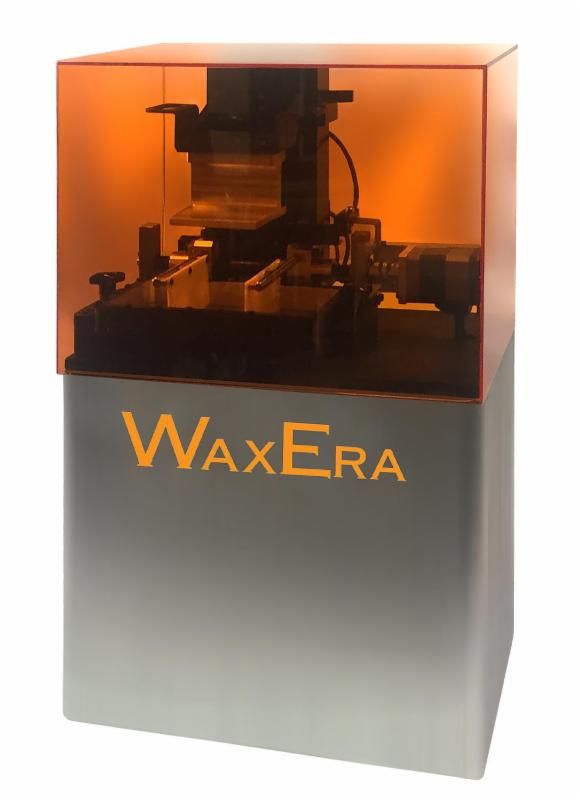
ETEC brings the same technology to the 3D realm by using anti-aliasing techniques at the edge of print layers to improve surface finish. Since voxels grow from the center of a part to the edges, applying less power to these outside pixels ensures they only grow to the desired edge of the part and not beyond. (Less power = slower polymerization growth)
Called pixel tuning, that process dramatically reduces pixelation on the edges of parts, resulting in a surface finish that requires little to no post-processing.
Smooth surface finish with CDLM and Top-down Printing
https://etec.desktopmetal.com/wp-content/uploads/2022/02/top-down-1-1-1.mp4
Most forms of DLP require each layer to be peeled off the film between each layer as the build plate moves up. As each layer is peeled, a small lip is formed on the part, which roughens the surface finish.
The patented CDLM process of the Envision One and top-down printing of the Xtreme 8K eliminate the need for peeling. With no peeling, lipping does not occur, resulting in a significantly better surface finish than other DLP processes.
With no peeling, lipping does not occur, resulting in a significantly better surface finish than other DLP processes.
During top-down printing, parts are fully submerged in the resin. With the parts supported by the resin, fewer support structures are needed, ultimately resulting in a better final surface finish.
High Throughput
High throughput via Large Build Volumes
With a variety of build volumes, ETEC DLP printers are capable of printing a wide variety of part sizes, from large single parts to high volumes of smaller parts in a single build.
Since build times are entirely dependent on Z-axis height, having large build volumes in the X- and Y-axes allow for potentially thousands of parts to be printed at once, in the same time required to print one part.
High throughput via Faster Polymerization
DLP build times are determined by Z-axis height because much of the print time is related to the time it takes to cure, or polymerize, each layer.
ETEC’s DLP technology enables the fastest layer polymerization through the use of the highest-power projectors and a highly efficient optical train.
By allowing for shorter exposure times per layer, ETEC systems ultimately deliver shorter print times and higher throughput.
High throughput via CDLM or Top-Down Printing
https://etec.desktopmetal.com/wp-content/uploads/2022/02/MS_DM_EnvisionTec_E1_CDLM_1080-1.mp4
Many forms of DLP require each layer to be peeled off the film as the build plate moves up between layers. This peeling takes time and must be done slowly to ensure parts are not damaged.
The patented CDLM process of the Envision One and top-down printing of the Xtreme 8K eliminate the need for peeling, reducing the time needed to print each layer and overall print times.
High throughput via Lights-Out Manufacturing
https://etec.desktopmetal.com/wp-content/uploads/2022/01/MS_DM_EnvisionTec_X8K_320_v043.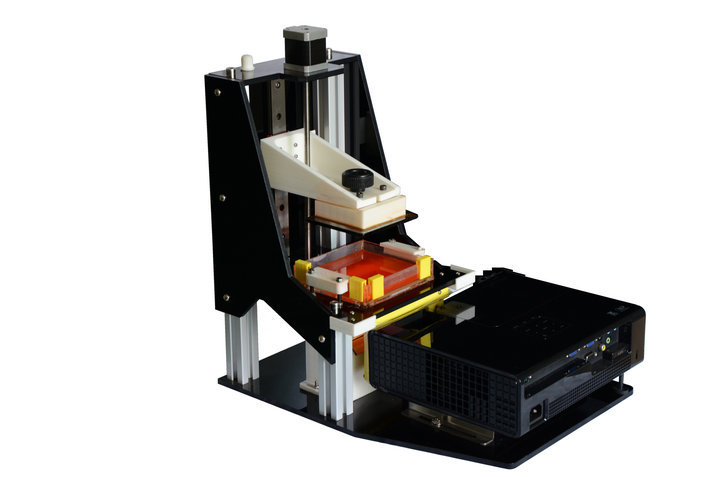 mp4
mp4
Get the most out of your ETEC DLP system with high throughput, 24/7 manufacturing designed to rival the volumes of traditionally-manufactured plastic parts.
An automated system for lights-out manufacturing and a dashboard for monitoring all operations and remote control of each machine, further increase uptime for each system.
Superior Part Properties
Superior part properties with New Backbone Chemistry
For decades, polymer 3D printing has been used for prototyping and tooling applications, but the technology hasn’t been widely adopted for the production of end-use parts.
One key to unlocking those end-use applications is the ability to create long-chain molecules in printed parts, resulting in significantly improved material properties, including isotropic strength – a key factor for many end-use parts.
ETEC printers and the DLP process include a number of hardware features – including high-powered projectors, custom-designed optics that minimize power loss– ensuring the creation of those long-chain molecules.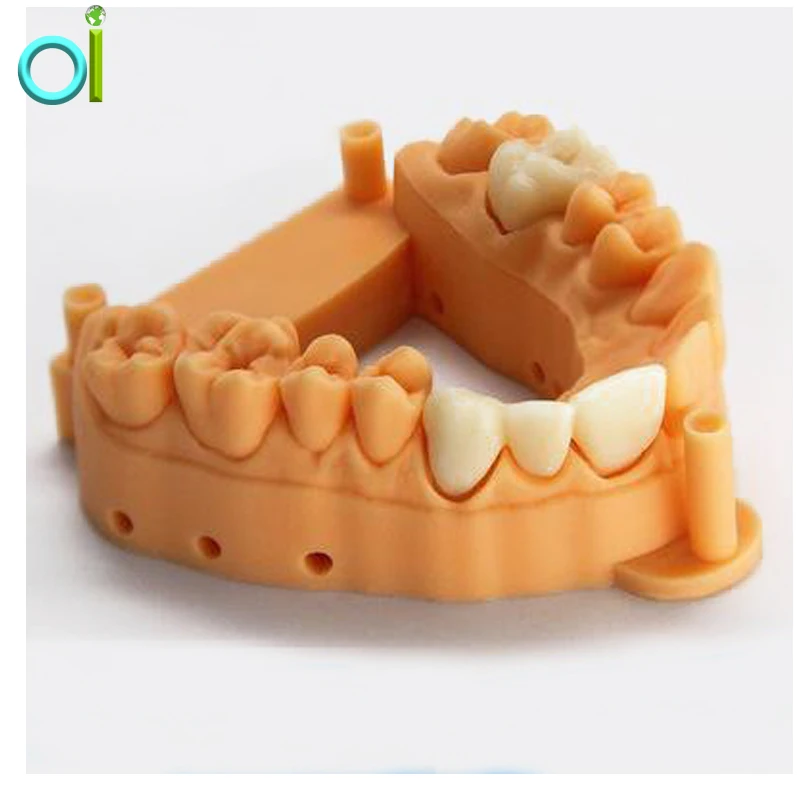
Superior part properties with Isotropic Material Properties
Isotropic material properties are essential for end-use components, but until recently have rarely been achievable with polymer 3D printing.
With FDM printing, very weak mechanical – not chemical – bonds form between each layer, resulting in anisotropic properties, or greater weakness along the Z axis than on the X or Y axes. This lack of uniformity has long kept FDM parts from being used as end-use parts.
With DLP printing, by comparison, each layer is left in a slightly uncured state, allowing it to chemically bond with the next layer as it prints. That bonding helps to create long chain polymers throughout parts, resulting in truly isotropic parts which are strong enough for end-use applications, and rival the properties of injection molded parts.
Superior part properties with 385nm Wavelength
All UV-curable resins require the addition of photoinitiators to start the polymerization process. Resins cured with 385-nm wavelength light require significantly less than many other materials, because the 385-nm wavelength is where absorption peaks for most common photoinitiators. Limiting the amount of photoinitiator in a part is particularly important for clear materials, because higher concentrations of photoinitiator result in parts with a yellow tint.
Resins cured with 385-nm wavelength light require significantly less than many other materials, because the 385-nm wavelength is where absorption peaks for most common photoinitiators. Limiting the amount of photoinitiator in a part is particularly important for clear materials, because higher concentrations of photoinitiator result in parts with a yellow tint.
Quality Materials
Quality materials via Industry-Leading Material Suppliers
ETEC is determined to provide its customers with the best materials in the 3D printing industry. To do it, they utilize a world-class material science team to produce ETEC-exclusive materials, and partner with world-leading material suppliers. The printer systems are designed to be selectively open, giving users flexibility.
Quality materials via 190+ qualified materials
With more than 190 materials, from hard plastics to high-performance elastomers to high-temperature materials, ETEC’s material portfolio can address the widest range of applications.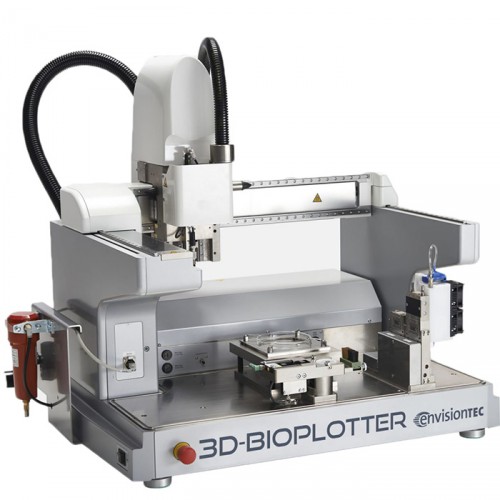
Quality materials that break the stigma of resins
Though they have been available to print for decades, resins have long been stigmatized as brittle and possessing mechanical properties that deteriorate quickly. A new generation of resins is emerging to erase that stigma, and open the door to a host of new applications.
The superior properties delivered by this new generation of resins includes vital features for end use parts, including mechanical properties that remain stable over time, highly ceramic-filled materials for added toughness and improved surface finishes, and high-temperature materials without brittleness, which are ideal for demanding environments.
In addition to those materials, ETEC offers resins with high wax content, making them ideal for casting jewelry and other products.
Easy To Use
Easy to use Software-Controlled Workflow
https://etec.desktopmetal.com/wp-content/uploads/2022/02/2022-01-24_15-55-16-3.mp4
The software that powers all ETEC printers, Envision One Rapid Prototype (RP) simplifies the process of setting up and starting a print.
With optimized support strategies for every material and automatic part orientation calculation, Envision One RP helps ensure printing success. For users who want more control over prints, the software allows for manual editing of a range of support parameters, including tip thickness, beam thickness, beam spacing and more.
To help increase productivity, prints can even be started remotely.
Easy to use Fast Material Switching
https://etec.desktopmetal.com/wp-content/uploads/2022/02/materiial-switch-1.mp4
With the ability to swap between any of ETEC’s 190-plus materials in just minutes, users can tailor their material choice to each specific application.
All ETEC materials come in a single pot, with no two-pot mixing required, simplifying the process of adding resin to the printer.
While the short shelf life of many competitor resins means they must be used within hours of being opened, all ETEC materials feature shelf lives of more than a year, ensuring no material ever goes to waste.
EnvisionTEC showcasing a complete 100m 3D printed chain
News
Perfactory Xede 3SP
EnvisionTEC has printed a record-breaking 100 meter chain - the longest complete 3D printed object in one sitting! What for? To demonstrate the capabilities of the Xede 3SP 3D printer and the new E-RigidForm rigid photopolymer.
The idea of 3D printing a chain was born among the employees of the American branch of a German company, considered one of the leading manufacturers of professional-grade stereolithographic 3D printers. They decided to demonstrate an unusual product at the Rapid + TCT exhibition, which opens today in Fort Worth, Texas.
Exactly 100 meters long chain made of the brand's latest E-RigidForm material, a tough and durable photopolymer reminiscent of polyurethane, designed for both prototyping and production of finished products.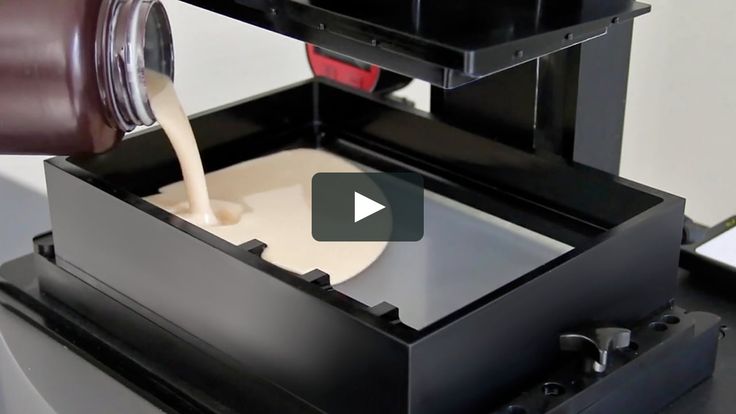 The tensile strength of the material reaches 73 MPa with an elongation at break of 7% and a stiffness of 87 Shore D. According to the developers, this is one of the strongest polymer materials developed for the additive industry, and the weaker photopolymer sank during 3D printing under its own weight.
The tensile strength of the material reaches 73 MPa with an elongation at break of 7% and a stiffness of 87 Shore D. According to the developers, this is one of the strongest polymer materials developed for the additive industry, and the weaker photopolymer sank during 3D printing under its own weight.
Complete chain completed in one production run. For the manufacture of a demonstration product, I had to use an EnvisionTEC Perfactory Xede 3SP 3D printer with a working area measuring 457x457x457 mm - the largest device in the EnvisionTEC line. It took about two weeks to design the circuit, and 99 hours to 3D print, that is, more than four days of continuous work.
The final product consists of 6,144 links, and it was originally planned to make a two-hundred-meter chain of 9414 rings, but even the most powerful computer available could not cope with slicing. By the way, the current Guinness record for the longest 3D printed product belongs to the American company Made in Space, which made a 37-meter beam on a prototype of a space 3D printer being developed for the Archinaut orbital system. More information about the new photopolymer can be found on the official EnvisionTEC website at this link.
More information about the new photopolymer can be found on the official EnvisionTEC website at this link.
Do you have interesting news? Share your developments with us, and we will tell the whole world about them! We are waiting for your ideas at [email protected]
Follow author
Follow
Don't want
4
Article comments
More interesting articles
9
Subscribe to the author
Subscribe
Don't want
New hot ends complement the Revo ecosystem offered since the beginning of this year - quick-change.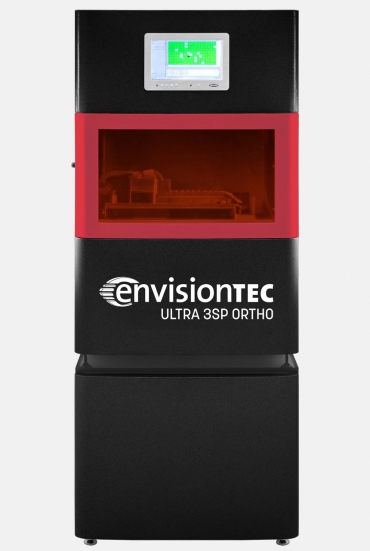 ..
..
Read more
5
Follow author
Follow
Don't want
Plasmics, an Austrian additive manufacturing company, is running a crowdfunding campaign...
Read more
82
Subscribe to the author
Subscribe
Don't want
Collaboration 3D
We are pleased to present you our joint development with Speci...
Read more
Techno Print 3D Company
This is our first review of the most popular and inexpensive 3D printers for 2020. The list will include the best-selling devices in two price ranges (up to 30 tr and up to 60 tr). Printers working with both plastic filament (FDM) and photopolymers (LCD/DLP) will be presented. This list will always be up to date, as it is periodically updated and supplemented. Read more→
Read more→
The Chinese company Dazz3D announces the launch of the project on KickStarter and accepts pre-orders for Dazz3D Basic and Dazz3D Pro 3D printers. These revolutionary new devices are aimed at both the professional and amateur markets. Read more→
We all know that precise calibration of the 3D printer desktop is the foundation and the key to successful printing on any FDM printer. In this article we will talk about the main and most popular ways to level the "bed". So, as mentioned above, 3D printing without desktop calibration is impossible. We face this process Read more→
It's hard to go through a day today without hearing about 3D printing technology, which is bursting into our lives at an incredible speed. More and more people around the world are becoming addicted to 3D printing technology as it becomes more accessible and cheaper every day. Now almost anyone can afford to buy a 3D printer, and with the help of Read more→
The FormLabs Form 2 and Ultimaker 3 are perhaps the most popular 3D printers today, capable of high quality printing with incredible surface detail.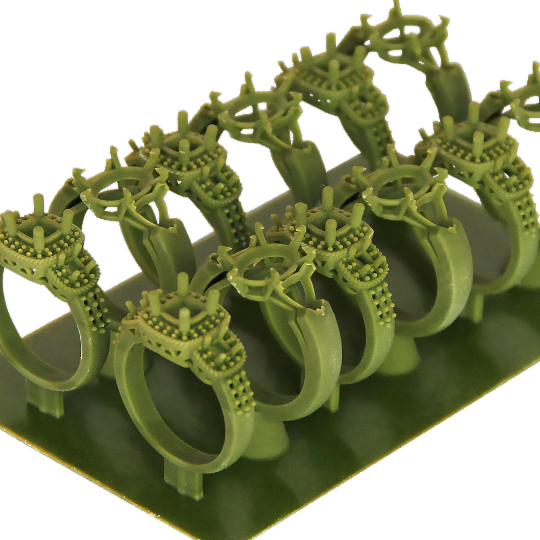 Moreover, these two devices use completely different technologies, and therefore, there are a lot of differences between them. Many will say that it is wrong to compare them or Read more→
Moreover, these two devices use completely different technologies, and therefore, there are a lot of differences between them. Many will say that it is wrong to compare them or Read more→
XYZprinting, best known for its daVinci line of desktop 3D printers, is bringing five new devices to the professional and industrial environment. One will use laser sintering technology, the second full color inkjet printing and three DLP machines. First of all, the novelties will be of interest to dentists and jewelers. Read more→
Cleaning the nozzle of a 3D printer is a fairly common process that any user of such a device has to deal with. This is not at all a complicated procedure that anyone can handle. You can complete this task in 15 minutes, using only handy tools and accessories. Read more→
Acetone steam polishing of ABS plastic is a process for smoothing the surface of 3D printed models. The result of this treatment makes your printed products look as if they were made by a professional mold casting method.